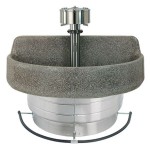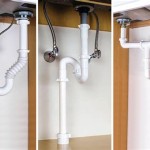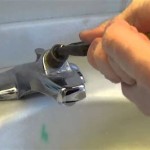Bathroom Sink Single Mixer Taps: A Comprehensive Guide
Bathroom sink single mixer taps, also known as monobloc taps, are a prevalent choice for modern bathrooms due to their streamlined design, ease of use, and water-saving capabilities. These taps combine hot and cold water into a single stream, controlled by a single lever or handle. This article provides a detailed exploration of bathroom sink single mixer taps, covering their types, benefits, installation, maintenance, and factors to consider when selecting one.
The evolution of bathroom taps has progressed significantly over time. Traditionally, separate hot and cold water taps were the norm. However, the introduction of single mixer taps revolutionized bathroom design and functionality. These taps offer a more convenient and efficient way to achieve the desired water temperature, contributing to both comfort and water conservation.
Understanding the Mechanics of Single Mixer Taps
Single mixer taps function based on a relatively simple yet effective mechanism. Inside the tap body, there is a cartridge or valve that regulates the flow of both hot and cold water. When the lever or handle is moved, it adjusts the position of this cartridge, controlling the ratio of hot and cold water that mixes before exiting the spout. The cartridge is typically made of ceramic or a durable polymer, ensuring smooth operation and longevity.
The internal design ensures that the water is mixed efficiently, minimizing temperature fluctuations and providing a consistent flow. The single control allows for precise adjustment of both the water temperature and flow rate, making it easier to achieve the desired setting quickly. This contrasts with the often cumbersome process of adjusting separate hot and cold taps to reach the ideal temperature.
The water supply is usually connected to the tap via flexible hoses that connect to the hot and cold water pipes under the sink. These hoses provide flexibility during installation and maintenance, allowing for easier access to the tap connections.
Advantages of Using Single Mixer Taps
Single mixer taps offer numerous advantages over traditional two-tap systems. These advantages contribute to their popularity and widespread adoption in modern bathrooms.
Space Saving: Single mixer taps require only one tap hole in the sink or countertop, freeing up valuable space. This is particularly beneficial in smaller bathrooms or those with limited countertop area. The streamlined design contributes to a cleaner and more modern aesthetic.
Ease of Use: The single lever or handle control allows for easy and intuitive adjustment of both water temperature and flow. This is especially convenient for individuals with limited dexterity or mobility. The single-handed operation makes it simple to quickly achieve the desired water setting.
Water Efficiency: Many single mixer taps are designed with water-saving features, such as flow restrictors or aerators. These features limit the amount of water that flows through the tap without sacrificing water pressure. This helps to conserve water and reduce water bills.
Temperature Control: Single mixer taps provide precise temperature control, allowing users to quickly and easily achieve the desired water temperature. This eliminates the need to constantly adjust separate hot and cold taps to find the perfect balance. The consistent temperature also reduces the risk of scalding.
Modern Aesthetics: Single mixer taps are available in a wide range of styles and finishes, allowing homeowners to choose a tap that complements their bathroom decor. From sleek and minimalist designs to more traditional styles, there is a single mixer tap to suit every taste.
Types of Bathroom Sink Single Mixer Taps
Bathroom sink single mixer taps are available in various types, each offering unique features and designs. Understanding these different types can help in selecting the most suitable tap for a specific bathroom.
Lever Handle Taps: These taps feature a single lever handle that controls both the water temperature and flow. Lever handle taps are easy to operate and are a popular choice for their simplicity and functionality.
Joystick Handle Taps: Joystick handle taps use a small joystick-like handle to control the water. These taps provide precise control over both temperature and flow and are often favored for their modern and sophisticated design.
Touchless or Sensor Taps: Touchless taps use infrared sensors to detect when hands are placed under the spout. These taps are hygienic and water-efficient, as they automatically turn off when hands are removed. They are often found in public restrooms but are also gaining popularity in residential bathrooms.
Pull-Out Sprayer Taps: Pull-out sprayer taps feature a spout that can be pulled out and used as a handheld sprayer. These taps are versatile and convenient for tasks such as rinsing the sink or washing hair. They are particularly useful in bathrooms with limited space.
High-Arc Spout Taps: High-arc spout taps have a tall, curved spout that provides ample clearance for filling large containers or washing hands. These taps are often chosen for their aesthetic appeal and practicality.
Wall-Mounted Taps: Wall-mounted taps are installed on the wall above the sink, rather than directly on the sink or countertop. These taps create a clean and modern look and are ideal for bathrooms with contemporary designs.
Factors to Consider When Choosing a Single Mixer Tap
Selecting the right single mixer tap for a bathroom requires careful consideration of several factors. These factors include the tap's style, functionality, material, and compatibility with the existing plumbing system.
Style and Design: The style of the tap should complement the overall design of the bathroom. Consider the shape, finish, and details of the tap to ensure it blends seamlessly with the existing decor. Options range from minimalist and modern to traditional and ornate.
Material and Finish: The material and finish of the tap affect its durability, appearance, and maintenance requirements. Common materials include brass, stainless steel, and chrome. Choose a finish that is resistant to corrosion and easy to clean.
Spout Height and Reach: The spout height and reach should be appropriate for the size and shape of the sink. Consider the depth of the sink and the height of any surrounding obstacles to ensure the tap provides adequate clearance.
Water Pressure Requirements: Check the water pressure requirements of the tap and ensure they are compatible with the existing plumbing system. Some taps require a minimum water pressure to function properly.
Ease of Installation: Consider the ease of installation of the tap. Some taps are more complex to install than others and may require professional assistance. Check the installation instructions and ensure you have the necessary tools and expertise.
Water Efficiency: Look for taps with water-saving features, such as flow restrictors or aerators. These features can help to conserve water and reduce water bills. Check the tap's water flow rate to ensure it meets your needs.
Warranty and Brand Reputation: Choose a tap from a reputable brand that offers a good warranty. This provides peace of mind and ensures that you are protected against defects or malfunctions.
Installation and Maintenance of Single Mixer Taps
Proper installation and maintenance are crucial for ensuring the longevity and optimal performance of a single mixer tap. Following the manufacturer's instructions and performing regular maintenance can help to prevent problems and extend the lifespan of the tap.
Installation: Installation typically involves connecting the tap to the hot and cold water supply pipes using flexible hoses. Ensure that the water supply is turned off before beginning the installation process. Follow the manufacturer's instructions carefully and use appropriate tools to avoid damaging the tap or plumbing system.
Cleaning: Regularly clean the tap with a mild soap and water solution to remove dirt and grime. Avoid using abrasive cleaners or scouring pads, as these can damage the finish of the tap. Wipe the tap dry after cleaning to prevent water spots.
Descaling: Over time, limescale can build up on the tap, particularly in areas with hard water. To remove limescale, soak the tap in a solution of vinegar and water for several hours or overnight. Rinse the tap thoroughly with clean water after descaling.
Cartridge Replacement: If the tap starts to leak or drip, the cartridge may need to be replaced. The cartridge is a key component of the tap that regulates the flow of water. Follow the manufacturer's instructions to remove the old cartridge and install a new one.
Checking for Leaks: Regularly check the tap and surrounding plumbing for leaks. Leaks can waste water and cause damage to the bathroom. Repair any leaks promptly to prevent further problems.
Professional Assistance: For complex repairs or installations, it is best to seek professional assistance from a qualified plumber. A plumber has the expertise and tools to diagnose and resolve plumbing issues safely and effectively.

Kastel Basin Faucets Modern Bathroom Mixer Tap Single Handle Hole Crane Signature

Bwe Single Hole Handle Bathroom Faucet Vanity Sink Basin Mixer Tap Antique In Matte Black A 96062 The Home Depot

Eva Waterfall Bathroom Sink Faucet Single Handle Mixer

Kastel Basin Faucets Modern Bathroom Mixer Tap Single Handle Hole Crane Signature

Bwe Oil Rubbed Broe Bathroom Sink Faucet Single Hole Modern Handle With Pop Up Drain Assembly Overflow And Supply Line Vanity Bath Mixer Tap Lead Free Com

Inart Single Hole Handle Bathroom Faucet In White Gold

Forious Single Handle Waterfall Bathroom Faucet With Spout Basin Mixer Tap In Matte Black Hh0302b The Home Depot

Modern Mono Bathroom High Rise Basin Mixer Taps Tall Single Lever Brass Chrome

Matte Black Curved Basin Faucet Chrome Waterfall Modern Washbasin Crane Multi Colored Bathroom Torneira Cold Hot Water Mixer Tap Welqueen Home Decor

Swiss Madison Avallon Single Hole Handle Sleek Bathroom Faucet In Brushed Gold Com
Related Posts







